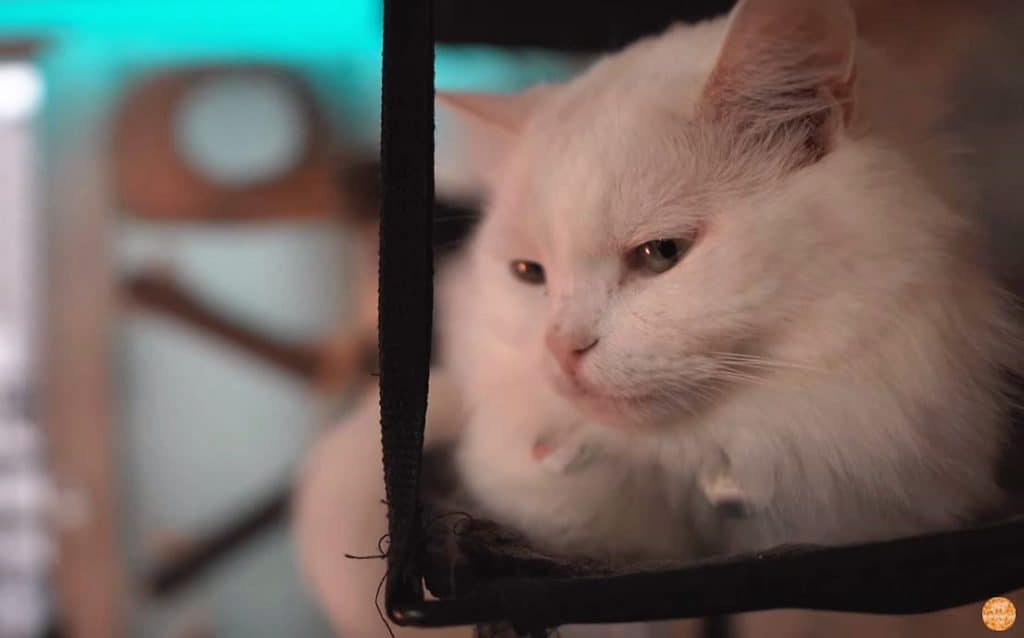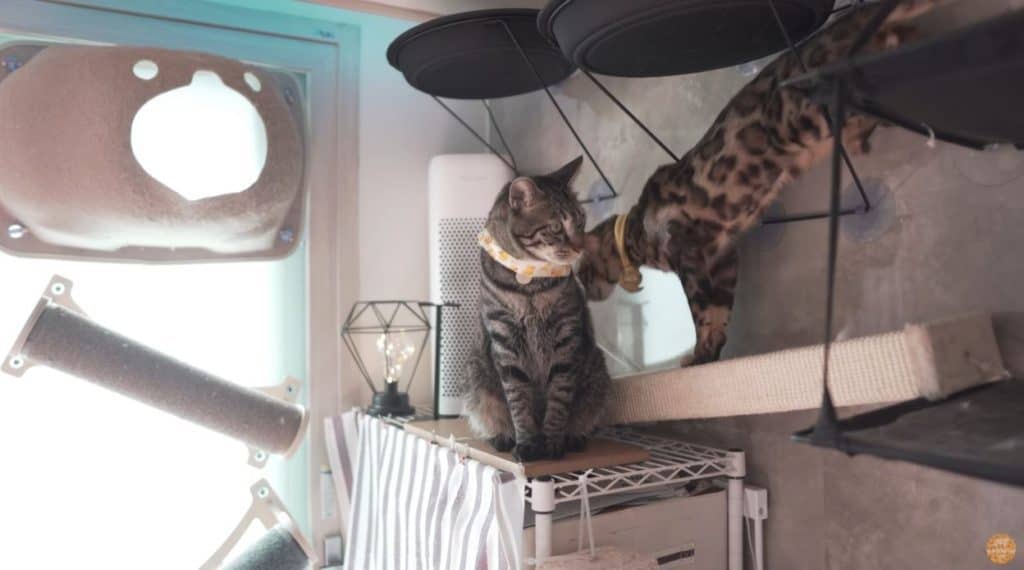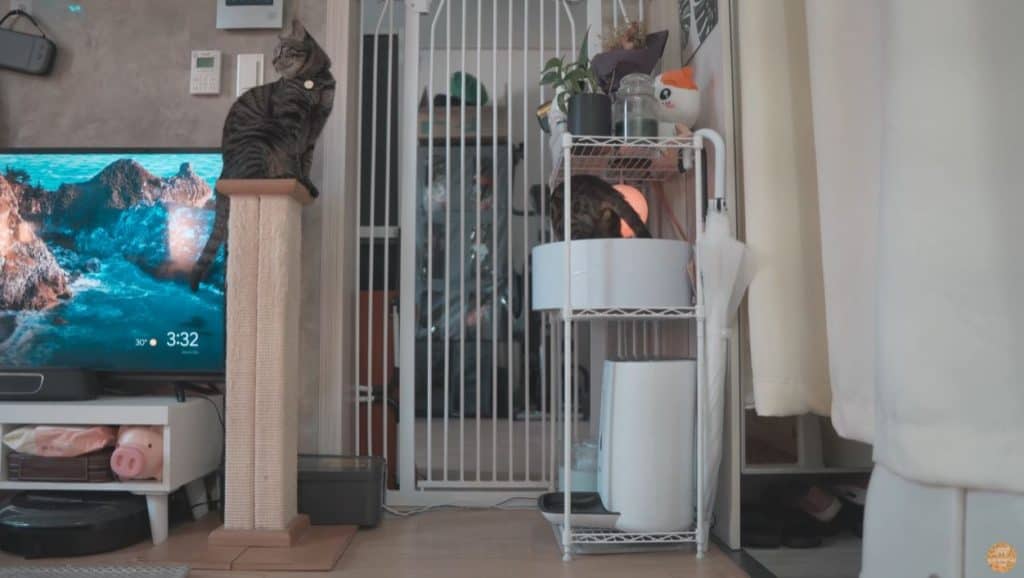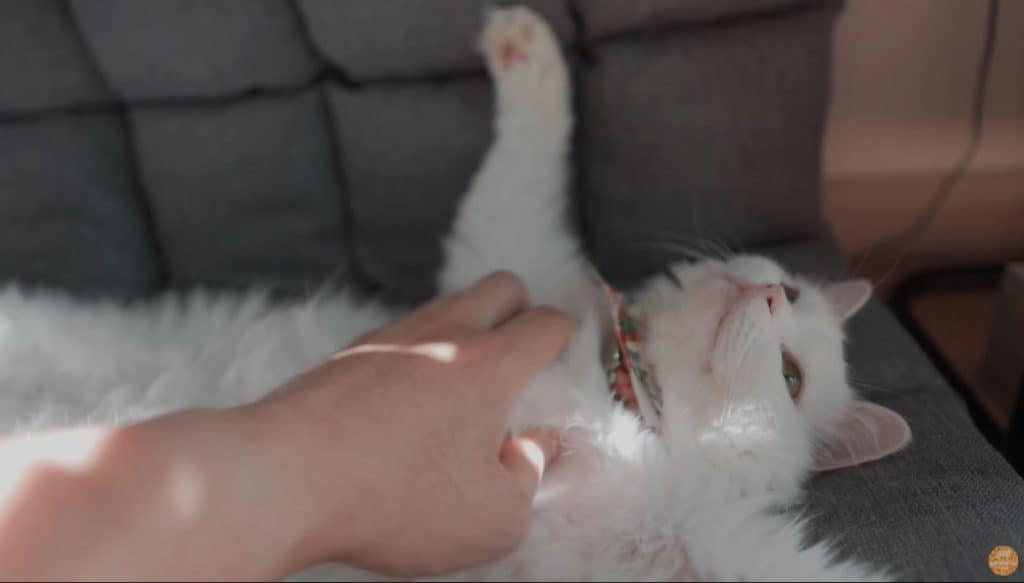Why is your cat obsessed with one room? For a cat to favor a particular room or area of your home, behaviorally, it’s usually a place where they find the most secure in their environment. There may also be specific things in those rooms, such as a favorite piece of furniture, toys, or treats. Therefore, there’s a stronger association with positive feelings with that room.

Once you bring the new cat or kitten into your home, you might very well notice how they seem to have a favorite spot inside the house – usually a bedroom or family room – where they sleep or hang out. Some cats even prefer to be outside for most of the day! However, that’s not recommended!
Noticing where your cat is most comfortable and expanding their comfort zones throughout the home is the best way to keep your cat confident and stress-free in any situation! In this article, we’ll answer more in detail about why cats prefer certain rooms or zones and how to get your cats to feel the same in different parts of the home.
Why Are Cats Attracted or Obsessed With One Room More Than Others?
A cat is a product of its environment and the habits that have formed over time. Therefore, when you see them favoring one room or zone over another, there’s a reason for it (it’s not just preference or personality).

There are a few main reasons why your cat may have a favorite room or zone:
- The particular room or zone has contains a lot of your cat’s own scent. For cats, scent is their ‘spatial reference tool’. Certain places and items create their ‘cat space’ and gives them security. What places do cats enjoy the most? Places that are able to contain their own smells.
Usually these places include scent absorbant materials, scratching spots, or their litter box. This is why, for cats, it doesn’t matter about the size of their home but rather how the home is designed to allow cats to be as natural as they would be in the wild. - Your cat(s) have positive associations with the area, especially if it’s an area that they are usually fed, given attention, or played with. Again, cats are very habitual creatures. They are creatures that are able to train humans and much as we can “train” them. So wherever they receive positive attention (especially food), they’ll likely return to those spots.
- It’s a safe and secure area for them to survey their environment or to get away from potentially stressful/frightening situations. Everybody that had experience with a cat know that they are careful creatures. In the wild/outdoors, they are both the prey and predator.
Therefore, how cats navigate the room will be completely different to how humans and other animals move around. If an area or room has a cat tower or access to higher vantage point, it’s a high probability that your cats will be there. - It’s warm place or area. Why do cats look for warm places to be? There are multiple reasons. First, domestic cats today are descendants from a common ancestor: the North African/Southwest Asian wildcat, Felis silveris lybica. This means that cats are quite adapted to environments that are much warmer than the average household.
Second, cats are relatively small creatures. They lose proportionally more warmth to their surroundings, thus, regulating body temperature is more difficult for cats. To combat this, smaller animals such as cats maintain a higher metabolic rate (higher operating temperature); their heart and breathing are much quicker than larger animals.
Which Rooms Might Cats Be Obsessed With?
This list probably won’t surprise a lot of cat owners, but it will provide some insight into why your cat(s) have chosen the particular area or room as their favorites!

- Bedrooms. Not only is it probably incredibly warm, there is likely a lot of absorbant, porous fabrics/materials around for the cats to deposit their scent! Also, most of the time, it’s likely the quietest room in the home.
- The Living Room. For cats that want some attention and cuddletime, they know this is where their humans go to wind-down and relax. The living room also typically has the most furniture for cats to navigate around and open enough for cats to get a sense of what’s going on around them.
- The Kitchen/Food Area. Cats will form positive associations to their surroudings whenever they eat. This includes other cats, humans, and even other animals. Having two cats eat together is a great tool for introductions (this is an important strategy that I use that allows me to introduce cats quickly without isolation/separation).
- Wherever Litter Boxes Are. Cats feel the most secure with the scent of themselves. Your cat’s litter box is of course, one very major olfactory source that gives them a sense of security in their environment. Therefore, wherever the litter box might be, cats might want to hang around the vicinity for familiarity.
Is It Okay For My Cat(s) to Stay In One Room All Day?
It is acceptable to leave your cat alone in a single room without supervision for several hours. The following conditions must be met, however:
- Make sure that the room’s entrances/exits (including windows) are securely locked.
- A clean litter box and sufficient number of litter pans.
- An adequate supply of food and clean water. When leaving for longer periods, it’s a better idea to leave them more food out than you usually do. Or, use an automatic feeder.
- Have distractions for them to keep busy while you’re away such as toys, boxes, and other stimulating activities!
Depending on the length of time you’re away, sometimes the safest method is to have one person you trust check-up and monitor your cats, including cleaning the litter box if needed. In general, it’s a good idea to have a plan in case anything goes wrong while you’re away.

| Cat Age | Maximum Cat Alone Time |
|---|---|
| Young Kittens (Under 6 months) | 4-6 hours |
| Kittens (6 – 12 months) | 8-12 hours |
| Young Adults (1 – 2 years) | 24 hours (1 day) |
| Mature Adults (2+ years) | 48 hours (2 days) |
| Senior Cats (10+ years) | 24 hours (1 day) |
Tips For Getting Your Cats to Explore Other Areas of Your Home
For a cat to have a favorite room or area of the home is okay, but if they stay there for too long or almost seem afraid to leave this area, it could negatively affect the cat’s behavior. Therefore, it’s better that your cats feel comfortable and confident everywhere in the home – not just an area of it.
Here are some tips to get cats to explore the other areas of the home:
- Provide more places for cats to deposit their scent. Cats mainly spread their scent through scratching, rubbing, and by going to the litter box. Therefore, having more scratching posts and cat furniture is more beneficial than just having one or two.
- Cats love to explore and discover new scents. Cat nip is a great tool for getting cats to explore different spots in the home.
- Create a cozy/warm area for them wherever they might find themselves. Again, cats love to be warm, therefore, having a spot readily available for them to curl up is very tempting.
